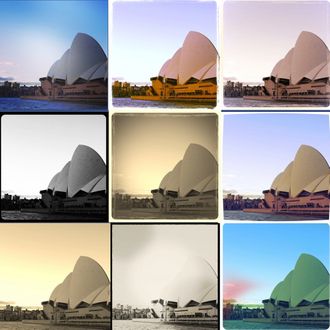
There are a lot of important, societally beneficial uses for the endless terabytes of data produced by people’s social-media addictions. One slightly less beneficial — but still interesting! — use of this data is to analyze which filters drive up engagement on sites like Instagram and Flickr. That’s what a team of researchers from Georgia Tech and Yahoo Labs did.
Their white paper, entitled “Why We Filter Our Photos and How It Impacts Engagement,” consisted of qualitative and quantitative sections. In the qualitative part, they conducted in-depth interviews with 15 frequent Flickr users to find out more about their photo-filter habits. In the quantitative part, they analyzed 7.6 million Flickr photos uploaded via the mobile app, more than half of which were cross-posted from Instagram, as well as data on how frequently the photos were viewed and commented upon, to get a better sense of how filters affect engagement. The interview results weren’t all that surprising, to be honest — one respondent talked about using the vintage effect to highlight the old-timey-ness of a 1920s-themed bar; another mentioned that certain filters can highlight one person in a photo of several of them.
The numbers are a bit more exciting. Overall, controlling for things like a user’s follower count and the popularity of the larger stream in which a given photo sits, “filtered photos are 21% more likely to be viewed and 45% more likely to be commented on” than unfiltered ones. As for which filters have which effects, the authors examined five: giving a photo a “warmer” temperature, increasing color saturation, increasing contrast, increasing exposure, and adding an age effect. The warmth filter had the largest correlation with the number of comments, while the exposure effect was tied most tightly to views. There were two negative correlations: Saturation effects were correlated with slightly lower views, and age effects with lower comments. Overall, “warm temperatures, higher contrast, and higher exposure increase chances of receiving [both] views and comments.”
None of this means slapping on a filter will make your photo go viral, of course — we’re talking about data gleaned from millions and millions of photos, many with minuscule numbers of comments and views. And there are obviously plenty of highly viewed, highly commented-upon photos that are filterless.
Still, the authors note that “there is little work — scholarly or otherwise — around filters, their use, and their effect on photo-sharing communities.” This study’s a good start; it’ll be interesting to learn more.




